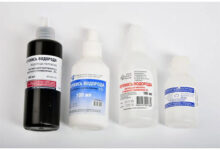## Resveratrol: The King of Antioxidants
Resveratrol has been hailed as a king of antioxidants and touted as a brain shield, the elixir of youth, nectar of the gods, the molecule of youth, the secret weapon of modern cosmetology, and many other bright and sonorous epithets.
Since it was first extracted from a poisonous medicinal plant Veratrum by the Japanese scientist Michio Takaoka in 1939, it has been the subject of constant scientific debate, with studies each year either confirming or refuting its purported benefits. It even has its own godfather – biologist David Sinclair, who devoted his life to studying it. So what is it, really – a capsule of eternal youth or another overhyped marketing dud?
## What is it?
Resveratrol is a natural phytoalexin, a stilbene (an aromatic hydrocarbon, a diarylethylene), a bioflavonoid, and a polyphenol. It is produced by some plants as a protective response to parasites (bacteria, fungi) and ultraviolet radiation.
Scientific name: trans-3,5,4′-trihydroxy-stilbene. Some sources use an alternative spelling of the term – Resveratol. Its designation in the INCI classification (International Nomenclature of Cosmetic Ingredients) is Resveratrol.
It is produced from plant and wine extracts in factories by fermentation.
## Physical and chemical properties:
* In its pure form, it is a powder
* Color – all shades of brown, mostly cocoa-colored
* Characteristic odor – strong and astringent, with a musky base note
* Does not fully dissolve in either ethanol or water
It exists in nature in two forms:
1. Cis-resveratrol (Z) – has a pronounced antioxidant effect and may have an effect on genetic transcription.
2. Trans-resveratrol (E) – has greater biological activity, is characterized by a pronounced anti-inflammatory effect, and has an effect on cancer cells.
Most studies use trans-resveratrol. This form is included in most dietary supplements
It is an organic substance with a branched chemical formula. As a result, its composition is difficult to break down into constituent parts. Supplement manufacturers add various plant extracts, vitamins, and other bioactive ingredients to improve its effectiveness.
Chemical formula: C14H12O3.
Structural formula:
[Image of resveratrol structural formula]It is available as a food supplement that has antioxidant, cardioprotective, antidiabetic, and restorative properties. It is also produced by some sports nutrition brands as a fat-burning agent, which helps to improve training effectiveness and increase muscle mass. It is mainly manufactured in capsule and tablet form.
## Research
It has been the subject of constant research since the mid-1990s. This is due to the work of David Andrew Sinclair, a renowned Australian biologist and professor of genetics who currently teaches at Harvard University. In 1995, he received his doctorate in molecular genetics and concentrated on the study of the “elixir of longevity” (as the scientist calls this phytoalexin in most of his works and interviews).
Research has mainly focused on resveratrol’s antitumor properties, since an effective cure for cancer has yet to be found. Many scientists (and not just Sinclair) believed that it could be a real breakthrough in this field. Another aspect that has been consistently studied is its ability to slow down the aging process and prolong life.
The history and results of research can be summarized as follows:
### 1997
* Prevented the formation of cancer cells in the skin of mice that had been specially exposed to carcinogens.
### 2002
* Reduced the number and size of tumors; prevented the development of stomach and rectal cancer in rats that had been specially exposed to carcinogens.
### 2003
* Extended the lifespan of yeast, nematodes, and Drosophila.
### 2006
* Further research on mice confirmed that [resveratrol inhibited the growth of breast cancer tumors](https://www.ncbi.nlm.nih.gov/pmc/articles/PMC1361


